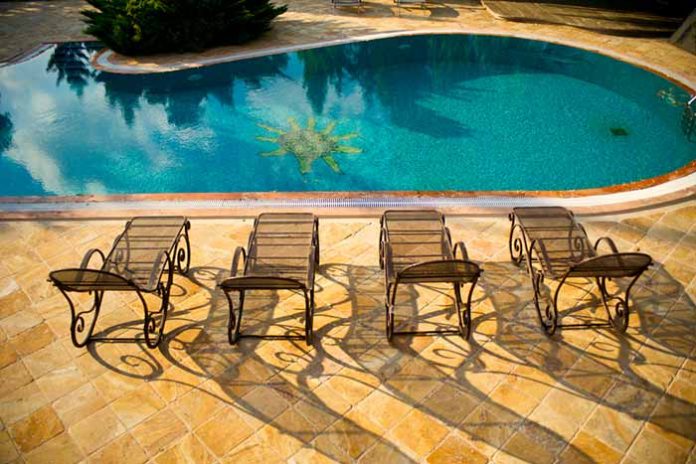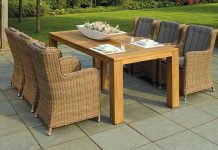Outdoor spaces, whether in a cosy backyard patio, a sprawling garden, or a commercial outdoor area, demand materials that can withstand the elements while maintaining their aesthetic appeal. Choosing the right waterproof outdoor material for outdoor applications is crucial for durability, maintenance, and overall design.
This article explores various outdoor material options, focusing on their weatherproof qualities and suitability for different environments.
The Essentials of Waterproof Outdoor Material Selection
When selecting materials for outdoor use, several factors are paramount. Durability against weather conditions such as rain, wind, and extreme temperatures is essential.
Additionally, resistance to fading from sunlight and the ability to withstand wear and tear are critical considerations. The choice of material impacts not only the longevity of the outdoor space but also its maintenance requirements and overall appearance.
Wood: Timeless and Natural
Wood is a classic choice for outdoor spaces, offering a natural and warm aesthetic. Types of wood like Hardwoods like teak, iroko, and European oak are popular for their durability and natural resistance to rot and pests. However, wood requires regular maintenance, including sealing and staining, to preserve its appearance and structural integrity.
Metals: Robust and Stylish
Metal options like aluminium, stainless steel, and wrought iron are favored for their strength and versatility. Aluminium is lightweight, rust-resistant, and ideal for modern designs. Stainless steel offers a sleek, contemporary look and is highly durable, while wrought iron brings a classic, ornate style to outdoor spaces.
Plastics and Composites: Innovative and Low Maintenance
Plastic and composite materials are increasingly popular in outdoor applications due to their low maintenance and high durability.
High-Density Polyethylene (HDPE) and Polyvinyl Chloride (PVC) are common choices, known for their resistance to moisture, decay, and insects. Composite materials, combining wood fibers and plastic, offer the appearance of wood with enhanced durability and minimal upkeep.
Concrete: Solid and Versatile
Concrete is a staple for outdoor spaces, prized for its strength and versatility. It can be moulded into various shapes and textures, making it suitable for everything from pathways to furniture. Its ability to withstand harsh weather conditions makes it a reliable choice for outdoor applications.
Nylon and Polyester: The Ultimate Waterproof Fabric
If you are looking for some ultimate waterproof fabric materials for your little outdoor space go for Nylon and polyester. These fabrics when tightly weaved together become the best waterproof fabrics to use in outdoor space essentials like chair covers, umbrellas, outdoor patio furniture and even raincoats.
You will have to ask the manufacturer to treat them specifically and make them fully waterproof so that they can adorn your beautiful outdoor space.
The Role of Technology in Material Processing
The advent of technology in material processing has expanded the possibilities for outdoor design. CNC Routing, a computer-controlled cutting process, allows for precise shaping and detailing of materials like wood, plastics, and composites. This technology enables the creation of intricate designs and patterns, adding a unique touch to outdoor spaces.
Glass: Transparent and Modern
Glass is an elegant option for outdoor spaces, particularly in balustrades and tabletops. Tempered and laminated glasses are preferred for their safety and durability. They provide a clear view while offering resistance to impact and weather elements.
Fabrics: Soft and Colorful
For soft furnishings, outdoor-specific fabrics are essential. These fabrics are designed to resist fading, mould, and water damage. They come in various colors and patterns, allowing for creative and vibrant outdoor settings.
Sustainability in Outdoor Material Choices
Sustainability is increasingly important in material selection. Recycled plastics and sustainably sourced woods are eco-friendly options. Choosing materials with a lower environmental impact not only contributes to sustainability but often offers long-term economic benefits through durability and reduced maintenance.
Innovations in Weatherproofing
Advancements in treatments and coatings have significantly improved the weatherproofing of outdoor materials. Protective sealants, UV-resistant coatings, and waterproofing treatments extend the life of materials and reduce the need for frequent maintenance.
Embracing the Outdoors: A Conclusion
The selection of outdoor materials is a delicate balance between aesthetics, durability, and practicality. From the natural elegance of wood and the robustness of metals to the innovative composites and enduring concrete, each material offers unique benefits.
With the integration of technology and sustainable practices, today’s outdoor spaces are not only beautiful and functional but also environmentally conscious. As we continue to embrace outdoor living, these weatherproof wonders provide the foundation for spaces that delight and endure through the seasons.





